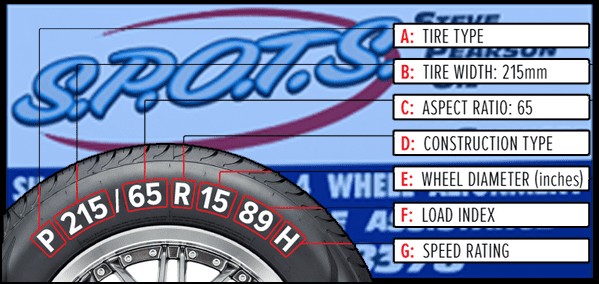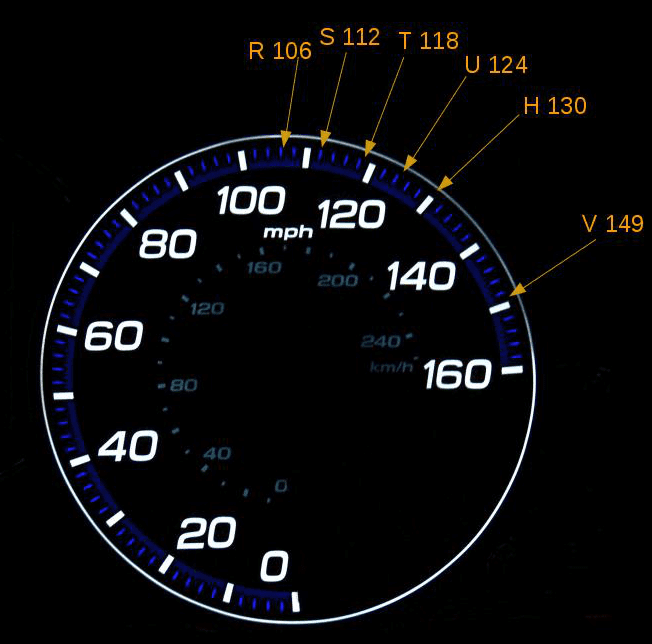Tires: The Foundation of Your Vehicle’s Road Safety
Your tires are the only thing connecting your vehicle to the road, making them one of the most critical safety components of your car. Yet, many drivers don’t think about their tires until something goes wrong—a flat, a blowout, or sliding on wet or icy roads. But understanding the basics of your tires can help you maintain better control, improve fuel efficiency, and extend the lifespan of your vehicle.
So, how much do you really know about your tires? Can you decipher the numbers and letters printed on the side? Do you know how to check for wear and tear? How often do you inspect them?
Let’s break it all down and help you understand your tires a little better.
Understanding Tire Markings

Have you ever noticed the series of numbers and letters on your tire’s sidewall? This isn’t just random information—it tells you everything you need to know about the tire’s size, load capacity, and speed rating. Here’s what each component means:
A: Tire Type
-
P – Passenger Tire: Designed for standard cars, SUVs, and light-duty pickup trucks.
-
LT – Light Truck: Built for heavier loads and towing applications.
-
T – Temporary: Spare tires meant for short-term use only.
-
ST – Special Trailer: Tires specifically designed for trailers.
B: Tire Width
This is the measurement of the tire’s width from sidewall to sidewall, expressed in millimeters. For example, a tire labeled P215/65R15 means the tire width is 215mm.
C: Aspect Ratio
The aspect ratio is the tire’s height as a percentage of its width. If a tire reads 215/65R15, the “65” means the height is 65% of the width. A lower ratio typically means better handling, while a higher ratio provides a smoother ride.
D: Wheel Construction Type
The letters R, D, and B on a tire sidewall indicate the type of construction used in the tire casing. R is for Radial, the most common type of tire construction, with layers of fabric cords that run perpendicular to the direction of rotation. D is for Diagonal, also known as bias ply, with layers of cord that cross each other at an angle. B is for Belted bias, a diagonal bias tire with a belt of sturdy material, usually fiberglass, under the tread.
|
Load Index |
Carrying Capacity (lbs) | Load Index | Carrying Capacity (lbs) | Load Index | Carrying Capacity (lbs) |
| 65 | 639 | 87 | 1201 | 109 | 2271 |
| 66 | 639 | 88 | 1235 | 110 | 2337 |
| 67 | 677 | 89 | 1279 | 111 | 2403 |
| 68 | 694 | 90 | 1323 | 112 | 2469 |
| 69 | 716 | 91 | 1356 | 113 | 2535 |
| 70 | 739 | 92 | 1389 | 114 | 2601 |
| 71 | 761 | 93 | 1433 | 115 | 2679 |
| 72 | 783 | 94 | 1477 | 116 | 2756 |
| 73 | 805 | 95 | 1521 | 117 | 2833 |
| 74 | 827 | 96 | 1565 | 118 | 2910 |
| 75 | 852 | 97 | 1609 | 119 | 2998 |
| 76 | 882 | 98 | 1653 | 120 | 3086 |
| 77 | 908 | 99 | 1709 | 121 | 3197 |
| 78 | 937 | 100 | 1764 | 122 | 3307 |
| 79 | 963 | 101 | 1819 | 123 | 3417 |
| 80 | 992 | 102 | 1874 | 124 | 3527 |
| 81 | 1019 | 103 | 1929 | 125 | 3638 |
| 82 | 1047 | 104 | 1984 | 126 | 3748 |
| 83 | 1074 | 105 | 2039 | 127 | 3858 |
| 84 | 1102 | 106 | 2094 | 128 | 3968 |
| 85 | 1135 | 107 | 2149 | 129 | 4079 |
| 86 | 1168 | 108 | 2205 | 130 | 4189 |
E: Wheel Diameter
This is the diameter of the wheel (rim) in inches. A tire with P215/65R15 is designed for a 15-inch wheel.
F: Load Rating
This number tells you how much weight (in pounds) the tire can safely support. You can cross-reference the number with a load index chart to determine the exact weight capacity. Most cars and light trucks have load index values ranging from 70-124.
G: Speed Rating
This letter indicates the maximum speed the tire can handle safely. For instance, a tire with an H rating can safely handle speeds up to 130 mph, while a T rated tire is limited to 118 mph. It’s crucial to choose a speed rating appropriate for your vehicle type and driving habits.

How to Check Your Tires for Wear and Damage

Understanding tire markings is essential, but so is regular maintenance. Here are a few simple ways to check the condition of your tires:
-
Tread Depth – Use the penny test: Insert a penny into the tread with Lincoln’s head down. If you can see all of Lincoln’s head, it’s time to replace your tires.
-
Uneven Wear – If some areas are more worn than others, it could indicate misalignment or improper inflation.
- Cracks or Bulges – These are signs of aging or structural damage that could lead to blowouts.
-
Vibration While Driving – Excessive vibration can be a sign of an unbalanced tire, alignment issue, or suspension problem.
How Often Should You Check Your Tires?
-
Tire pressure – At least once a month.
-
Tread depth – Every few months or before a long trip.
-
Alignment and rotation – Every 5,000 to 7,500 miles (check your owner’s manual for recommendations).
-
General inspection – Any time you notice unusual driving behavior, like pulling to one side.
Final Thoughts
Your tires are more than just rubber on wheels—they are your first line of defense on the road. Proper maintenance and understanding of tire specifications ensure a safer and smoother ride, reducing the risk of accidents and costly repairs. Next time you hop in your car, take a few extra minutes to inspect your tires—it could make all the difference in your safety and driving experience.
Need new tires or a professional inspection? Stop by S.P.O.T.S. in Aledo, IL! We’ll make sure your ride is road-ready with the right set of tires for your vehicle and driving needs.
